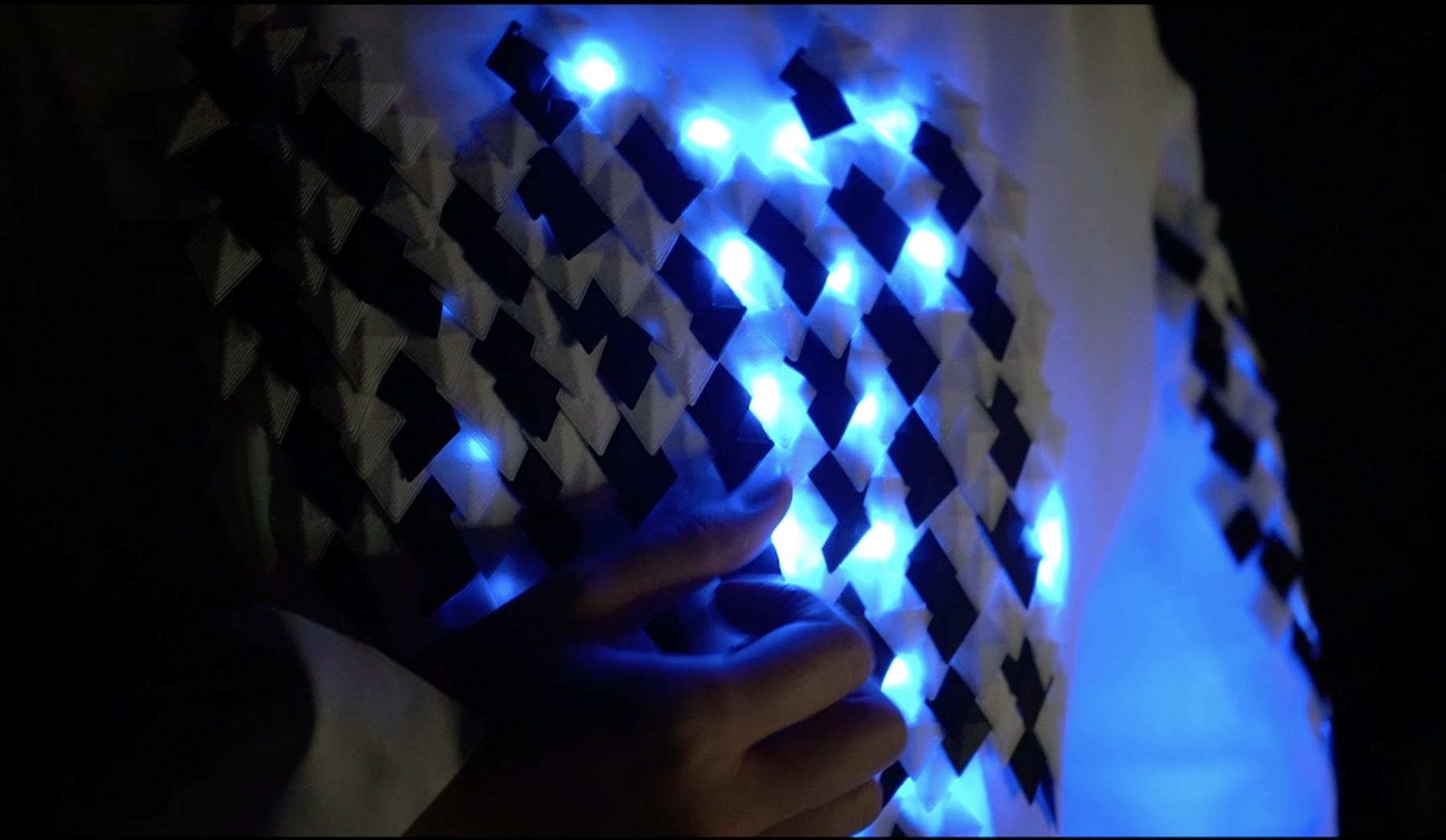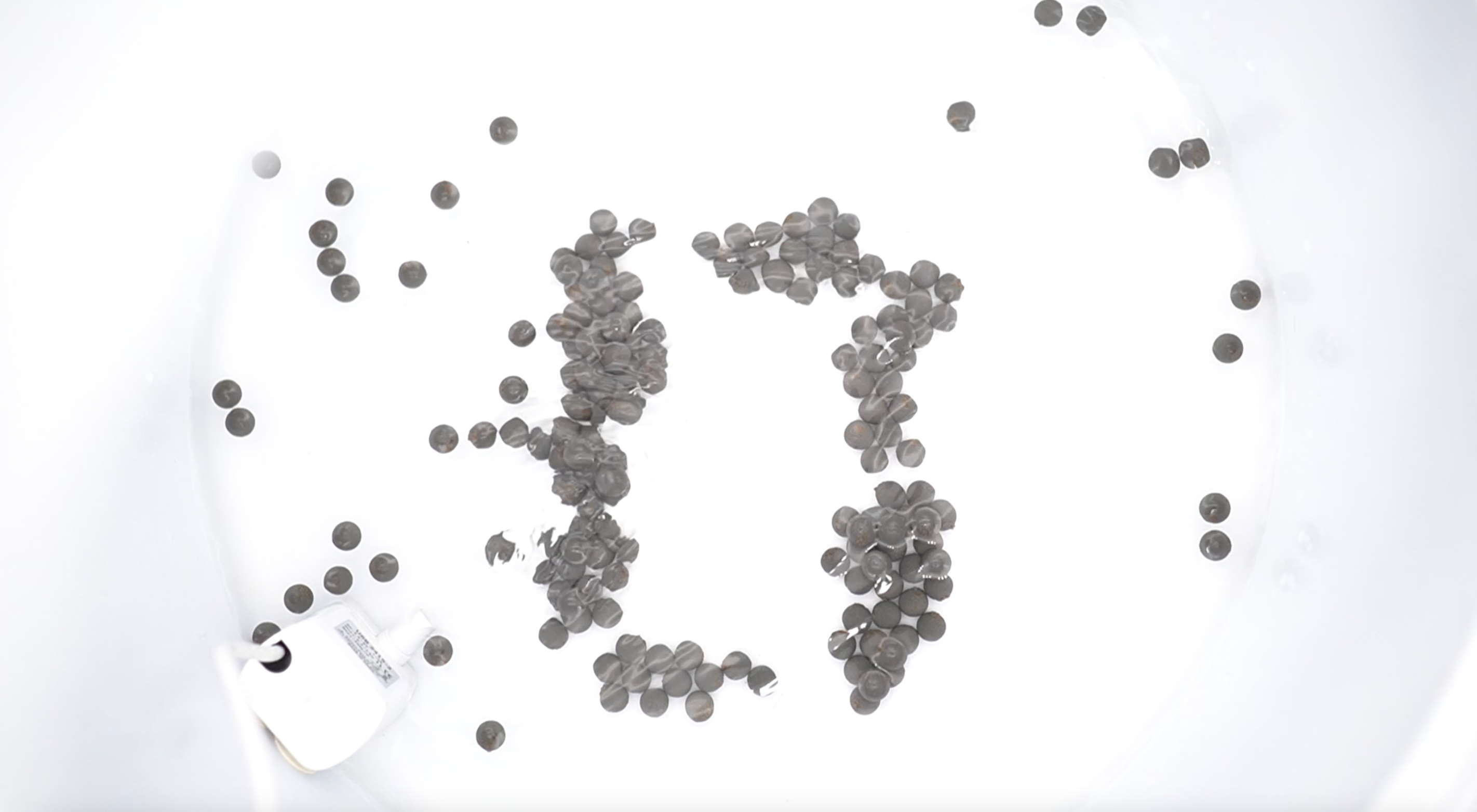Doctoral Student


Doctoral Student

What would people be like if they had scales? We would swim in the flow of the wind, use our scales to feel the world, exchange information with people, society, and nature, and emit light in response to the movement of our bodies. This work uses the conductive sequins as human scales to sense our breathing and body movement and signal the outside world with light.
The scales printed by 3d printer are made of conductive material, which can sense and transmit signals through the opening and closing of the scales to visualize the movement of our body and the affection by the environment. We can use the collision of scales to demonstrate the beauty of subtle body movements and decorate the body itself with body movements. It can also be used to visualize the shape of the wind we feel, decorate ourselves with nature’s power, and show our feelings to those around us.
It has a different tactility from our skin, hard but smooth; it protects us but does not resist the touch of others. We can use it to translate the touch of others into visualization, using our scales to tell each other the changes we have from other people’s touch. In a No-touch society, we try to avoid more intimate relationships while making us aware of the importance of human communication, and we will continue to find ways to prove our existence.
Hua Ma, Junichi Yamaoka (2021)

Floating Pixelsは、実体のあるピクセルが、集合・拡散することで情報を表示します。磁性を持つピクセルは、水面を浮遊して、磁力により集合して成形します。これまでの画面の中に留まっていたピクセルは、実体化することで、実世界に溶け込み、人と直接触れる対話を実現することができます。
Floating Pixels displays information through the gathering and diffusion of physical pixels. The magnetic pixels float on the surface of the water and are assembled and molded by magnetic force. By materializing, these pixels, which have so far remained within the screen, can integrate into the real world and realize a direct interaction with people.
Junichi Yamaoka (2020)